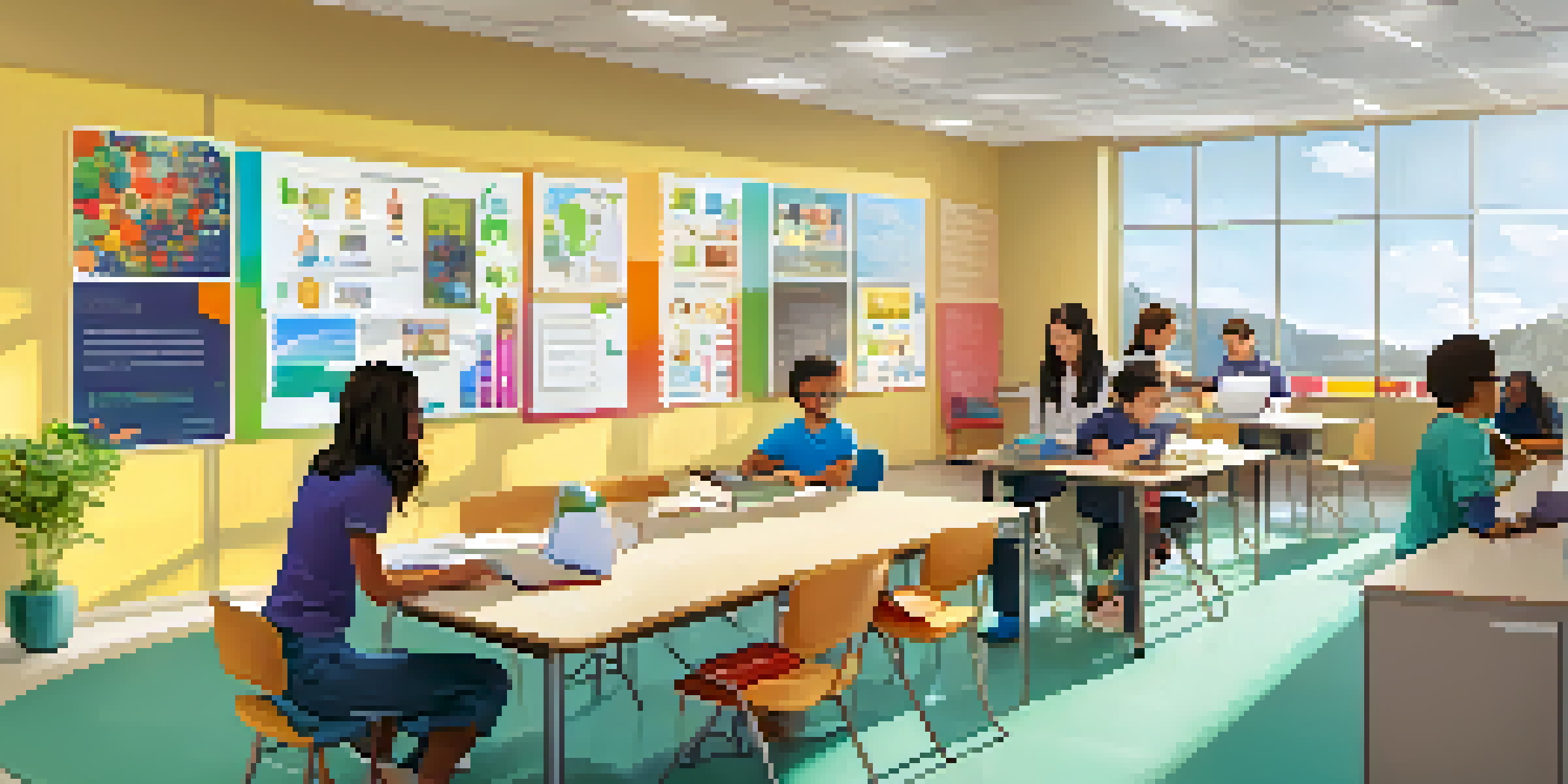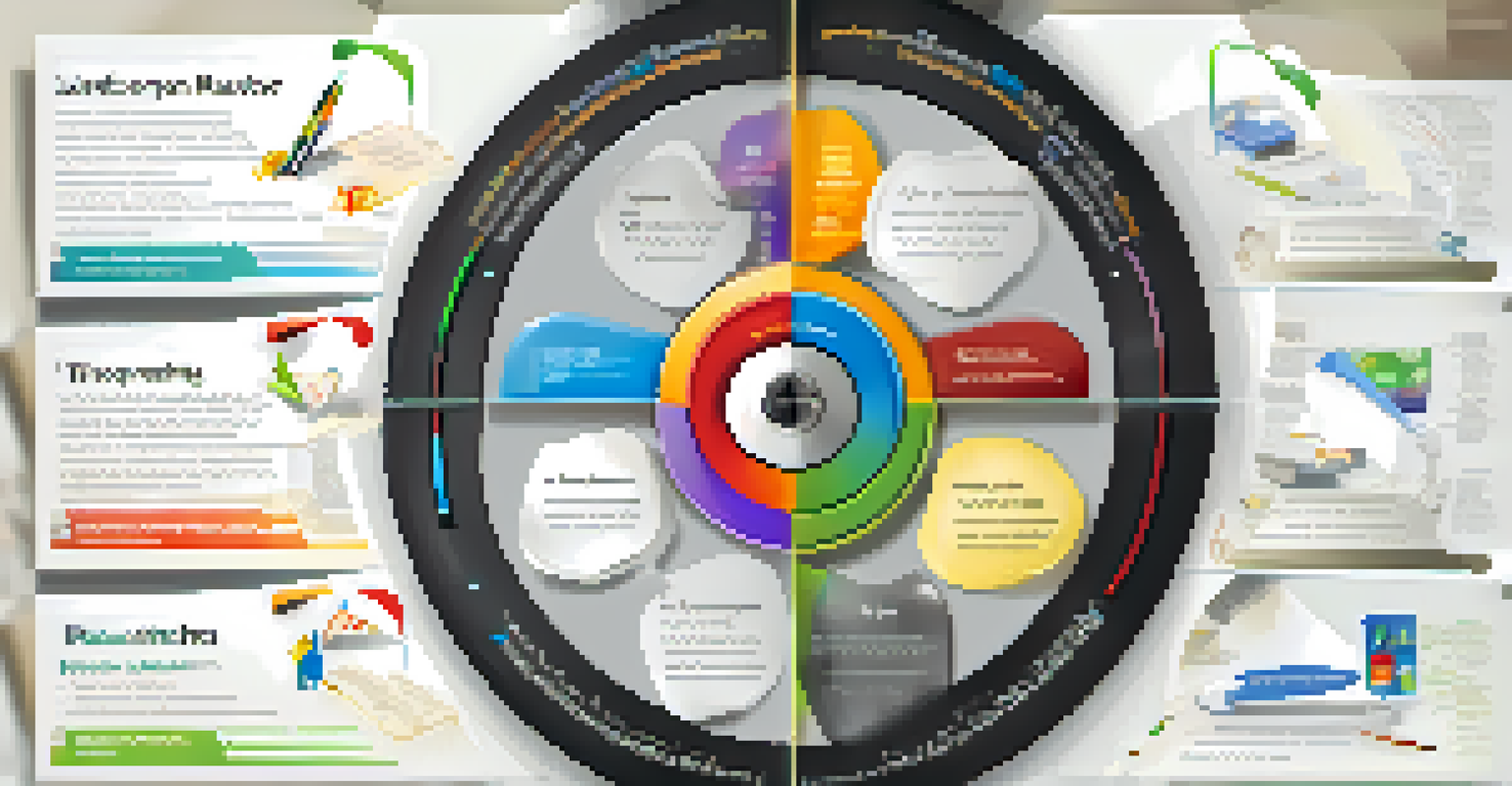Understanding the Learning Styles in Blended Learning

What is Blended Learning and Why It Matters
Blended learning combines traditional face-to-face instruction with online activities, creating a versatile learning environment. This approach caters to diverse student needs, making education more accessible and personalized. By leveraging technology, blended learning fosters collaboration and engages students in new ways.
Blended learning is not just about using technology; it's about creating a holistic learning experience that meets the diverse needs of all students.
An example of blended learning can be seen in a flipped classroom model, where students review lecture materials at home and engage in discussions during class time. This allows for deeper understanding and retention of information. As educational institutions increasingly adopt this model, understanding how learning styles fit into the mix becomes essential.
Recognizing that not all students learn the same way is crucial for optimizing blended learning. By catering to various learning styles, educators can enhance student engagement and improve academic outcomes.
Exploring Different Learning Styles
Learning styles refer to the preferred ways individuals absorb, process, and retain information. While there are several models, one of the most popular is the VARK model, which classifies learners into four categories: Visual, Auditory, Reading/Writing, and Kinesthetic. Each type has unique strengths that can be leveraged in a blended learning setting.

For instance, visual learners might excel with video presentations and infographics, while auditory learners may benefit from podcasts and discussions. Understanding these preferences allows educators to tailor their content delivery and improve overall student engagement.
Blended Learning Enhances Engagement
By combining traditional teaching with online activities, blended learning caters to diverse student needs and fosters collaboration.
Moreover, kinesthetic learners, who thrive on hands-on activities, can find success in blended environments through simulations and interactive online labs. By incorporating a variety of teaching methods, educators can help all students feel valued and included.
The Importance of Assessing Learning Styles
Before implementing a blended learning approach, it’s essential to assess students' learning styles. This can be done through surveys, quizzes, or informal discussions, which provide insights into how students prefer to learn. With this knowledge, educators can create a more tailored learning experience.
The future of education is not about technology itself, but how we use technology to enhance the learning experience.
For example, if a majority of students identify as visual learners, instructors can prioritize visual aids in their presentations. Conversely, if kinesthetic learners are prominent, they might incorporate more hands-on activities or experiments to facilitate understanding.
Assessing learning styles not only enhances engagement but also promotes a sense of ownership over the learning process. When students see their preferences reflected in the curriculum, they are more likely to invest in their education.
Creating an Inclusive Blended Learning Environment
An inclusive blended learning environment ensures that all students feel represented and engaged. By incorporating a variety of instructional strategies and materials, educators can address the diverse needs of their students. This not only fosters a positive learning atmosphere but also encourages collaboration among peers.
For instance, integrating group projects can allow students with different learning styles to contribute their strengths. A visual learner might create presentations while an auditory learner leads discussions, promoting teamwork and mutual respect.
Understanding Learning Styles Matters
Recognizing different learning styles helps educators tailor their approaches, leading to improved academic outcomes.
Additionally, offering options for assignments can cater to individual preferences. For example, students could choose between a written report, a video presentation, or a hands-on project, allowing them to demonstrate their understanding in a way that resonates best with them.
Leveraging Technology to Support Learning Styles
Technology plays a pivotal role in supporting various learning styles in blended learning environments. From interactive simulations to educational apps, there are countless tools available to enhance the learning experience. By integrating these resources, educators can create a more dynamic and engaging curriculum.
For instance, visual learners can benefit from platforms that offer animated videos and infographics, while auditory learners might find podcasts and audiobooks more helpful. With the right tools, educators can cater to individual preferences while still covering essential content.
Moreover, technology can facilitate personalized learning pathways, allowing students to progress at their own pace. This adaptability is especially beneficial in blended learning, where students can revisit online materials as needed, reinforcing their understanding.
Feedback and Continuous Improvement in Blended Learning
Feedback is an essential component of blended learning, helping educators refine their strategies to better meet student needs. Regular check-ins, surveys, and assessments can provide valuable insights into how well different learning styles are being addressed. This information allows instructors to adapt their approaches continuously.
For example, if students express a preference for more visual content, educators can incorporate additional videos or infographics based on their feedback. This iterative process fosters a culture of improvement and responsiveness, ultimately benefiting student learning.
Technology Supports Diverse Learners
Integrating technology in blended learning environments allows for personalized learning pathways that cater to individual preferences.
Moreover, encouraging students to share their experiences can empower them to take an active role in their education. When learners feel heard, they're more likely to engage with the material and invest in their academic success.
Conclusion: Embracing Diversity in Learning Styles
Understanding and accommodating different learning styles is vital for the success of blended learning environments. By recognizing the unique preferences of students, educators can create more engaging and effective instructional strategies. This approach not only enhances academic outcomes but also fosters a more inclusive atmosphere.
As we continue to embrace blended learning, the need for flexibility and adaptability becomes increasingly important. Educators should remain open to experimenting with various methods and technologies that cater to a diverse range of learners.

Ultimately, the goal is to empower all students to thrive in their educational journeys. By embracing diversity in learning styles, we can create richer, more meaningful learning experiences that resonate with every learner.